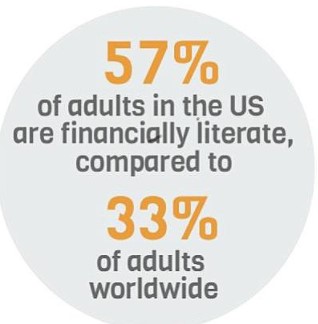Financial literacy is a critical skill that empowers individuals to make informed decisions about their financial resources and future. The 2024 TIAA Institute-GFLEC Personal Finance Index (P-Fin Index) provides comprehensive insights into the state of financial literacy among U.S. adults, revealing significant gaps and opportunities for improvement.
This article will delve into the key findings of the P-Fin Index, explore the demographic variations in financial literacy, and discuss strategies to enhance financial literacy and overall financial well-being.
Understanding Financial Literacy
Financial literacy encompasses knowledge and understanding that enable individuals to make sound financial decisions and effectively manage their personal finances. The P-Fin Index, now in its eighth year, measures financial literacy across eight functional areas:
- Earning: Understanding determinants of wages and take-home pay.
- Consuming: Managing budgets and spending.
- Saving: Maximizing accumulation through savings.
- Investing: Understanding investment types, risks, and returns.
- Borrowing/Managing Debt: Knowing the relationship between loan features and repayments.
- Insuring: Understanding types of insurance coverage.
- Comprehending Risk: Grasping the implications of uncertain financial outcomes.
- Go-to Information Sources: Identifying appropriate sources of financial advice.
Key Findings of the 2024 P-Fin Index
The 2024 P-Fin Index highlights several critical insights into the financial literacy of U.S. adults:
- Overall Financial Literacy: U.S. adults correctly answered only 48% of the P-Fin Index questions on average, a figure that has remained relatively stable since 2017. This indicates a generally poor level of financial literacy, particularly concerning everyday financial decisions.
- Demographic Variations: Financial literacy varies significantly across different demographic groups:
- Gender Gap: Women consistently score lower than men, with a 10-point gap in the percentage of correct answers in 2024.
- Racial and Ethnic Differences: Asian and White Americans have similar levels of financial literacy, while Black and Hispanic Americans score lower.
- Generational Differences: Financial literacy is notably lower among younger generations, especially Generation Z, who correctly answered only 37% of the questions.
- Functional Knowledge: Comprehending risk remains the area with the lowest functional knowledge, with only 35% of questions answered correctly. Borrowing and debt management is the area with the highest literacy, with 59% of questions answered correctly.
- Retirement Fluency: For the first time, the 2024 survey assessed basic retirement fluency, covering topics such as Social Security benefits, Medicare, retirement savings, and life expectancy. On average, respondents correctly answered only 40% of the retirement-related questions, indicating a need for greater focus on retirement education.
The Impact of Financial Literacy on Financial Well-being
The P-Fin Index underscores the strong link between financial literacy and financial well-being. Individuals with higher financial literacy tend to have better financial outcomes, such as lower levels of debt constraint, financial fragility, and greater confidence in retirement income prospects. For example, those with very high financial literacy are twice as likely to be financially secure and three times more likely to have emergency savings compared to those with very low literacy.
Strategies to Improve Financial Literacy
Improving financial literacy requires targeted initiatives and collaborative efforts from various sectors, including education, financial services, community organizations, and policymakers. Here are some key strategies:
- Integrate Financial Education in Schools: Equipping young people with financial knowledge through primary and secondary education is crucial. Curriculum programs should cover essential financial topics to prepare students for future financial decisions.
- Tailored Programs for Demographic Groups: Specific initiatives should target demographic groups with lower financial literacy, such as women, Black, and Hispanic communities. These programs can be delivered through community organizations, workplaces, and financial institutions.
- Focus on Comprehending Risk: Since understanding risk is a major gap, educational programs should emphasize risk-related concepts. This knowledge is vital not only for personal finance but also for broader areas such as health and insurance.
- Promote Retirement Planning: Given the low levels of retirement fluency, programs should focus on educating individuals about retirement planning, Social Security, Medicare, and investment strategies to ensure long-term financial security.
Conclusion
Financial literacy is a foundational skill for achieving financial well-being. The 2024 TIAA Institute-GFLEC Personal Finance Index reveals significant gaps in financial literacy among U.S. adults, highlighting the need for targeted educational initiatives. By addressing these gaps and promoting financial education, we can empower individuals to make informed financial decisions, improve their financial well-being, and secure a more stable financial future.
